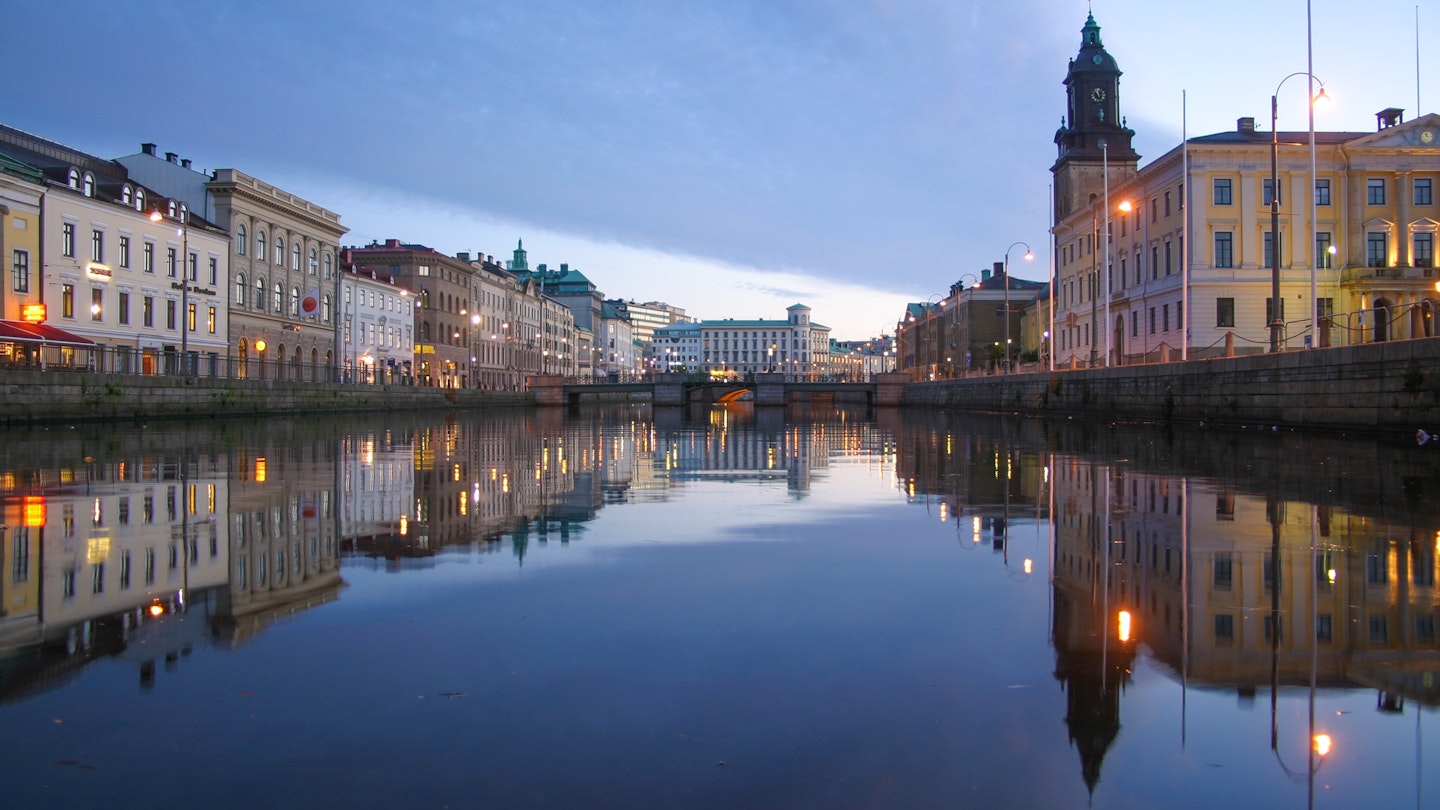Gothenburg is Scandinavia’s largest port and is often affectionately referred to as Sweden’s ‘second city’. Known primarily for producing Volvos, it has undergone a remarkable transformation into a contemporary travel destination over the last couple of decades.
Today, cutting-edge design has supplanted the industrial grit of Gothenburg’s once-run-down neighborhoods. Former warehouses and industrial buildings now house art galleries, while Michelin-starred restaurants enhance the local dining scene. Additionally, independent coffee shops enrich the city’s culture. With a vibrant nightlife and peaceful islands nearby, Gothenburg is becoming a strong contender alongside Stockholm.
Welcome to the Neighbourhood
Gothenburg consists of several distinctive neighborhoods, making it helpful to familiarize yourself early on. The historic city center is separated from the rest of town by a jagged moat. In Vasastan, you will find most of the art galleries, while important museums are located along Avenyn, the city’s main boulevard.
Trendy Magasingatan showcases Swedish fashion brands, whereas the streets around Järntorget are filled with a mix of hip and ethnically diverse eateries. None of the city’s previously challenged areas have experienced a more significant transformation than Haga, one of Gothenburg’s oldest districts, now vibrant with quirky shops, cafes, and renovated wooden houses.
Adjacent to Haga is Linné, where independent designer shops and outdoor patios line Linnégatan boulevard. The adjoining ‘long streets’ such as Andra Långgatan retain their classic watering holes, maintaining a delightful down-to-earth atmosphere.
Frihamnen, Gothenburg’s innermost harbor and port area, leads the city’s rebirth. Partially derelict since 2000, it is transforming into Jubileumsparken – a new leisure park that will feature a man-made beach, a floating pool, and a spectacular sauna, designed by the acclaimed architect group Raumlaborberlin.
Art and Design
While Stockholm is often highlighted for its comprehensive design scene, Gothenburg also boasts an impressive array of trendy interior design shops within its compact city center. Places like Artilleriett/Artilleriet Kitchen, Rum 21, and Floramor & Krukatös provide ample inspiration for décor enthusiasts.
For contemporary Scandinavian art lovers, galleries such as Galleri Ferm, Galleri Thomassen, and Galleri Nils Åberg are must-visits. Utilizing an old power station, Röda Sten art center serves as Gothenburg’s premier alternative art venue, hosting everything from edgy Swedish photography exhibitions to lively music events. Though currently undergoing renovations, the Röhsska Museum remains one of Sweden’s finest design and applied arts museums.
The city’s allure is also greatly enhanced by its striking architecture. Kuggen (Lindholmplatsen), resembling a red Colosseum, exemplifies green engineering, while the unique red-and-white skyscraper Göteborgs-Utkiken (also known as The Lipstick) towers over the harbor, presenting breathtaking views.
City of Culture
As the birthplace of Volvo, Gothenburg shares a long-standing relationship with the car manufacturer. Visitors can tour the manufacturing facility and explore all things Volvo at the Volvo Museum. However, the city offers much more than automotive culture, including various world-class museums.
At the incredible Universeum, science and technology meet the rainforest. Meanwhile, the Konstmuseum boasts an extensive art collection dating back to the 15th century, considered one of the finest in Europe. The Stadsmuseum is the only place in Sweden showcasing an original Viking longship, while Sjöfartsmuseet delves into the city’s maritime culture. To unwind after a day of museum visits, head to Liseberg, the largest amusement park in Sweden.
Where to Eat
Gothenburg’s culinary scene is characterized by its abundance of fresh fish and seafood sourced from the west coast of Sweden. Options like Swedish oysters, seasonal smoked prawns, grilled crayfish, and the catch of the day dominate the menu at local favorite Restaurang Gabriel, located within the famous Feskekörka (‘fish church’) fish market.
Other excellent options for enjoying the ocean’s bounty include Fiskekrogen, celebrated for its shellfish platters, and Strömmingsluckan, a humble food truck at Magasinsgatan 17 serving freshly grilled herring with mash and lingonberries. The creative, seasonal menu at the Michelin-starred Sjömagasinet focuses heavily on seafood, alongside the multi-course tasting menus of other Michelin-awarded establishments like Koka and Thörnstöms kök.
Beyond seafood, Gothenburg’s diverse dining landscape includes a variety of world cuisines, ranging from Thai and Ethiopian to gourmet hot dogs, with many chefs promoting Sweden’s slow food movement. For connecting with local food enthusiasts, the charming Saluhallen (‘The Market Hall’) boasts around 40 delis and restaurants.
Bring on the Night
Gothenburg’s nightlife is vibrant, featuring beer halls, wine bars, nightclubs, and live music venues. It has also embraced the craft beer movement, with numerous bars and brewpubs located along Andra and Tredje Långgatan. Haket Pub showcases many local microbreweries, while Noba Nordic Bar explores brews from Norwegian, Danish, and Icelandic origins. The historic Ølhallen 7:an (Kungstorget 7) has been serving pints since 1900.
For an intriguing atmosphere, Mexican-brothel-inspired Puta Madre delivers enticing cocktails alongside its whimsical decor, while the tiny Basque bar Juan Font pairs carefully selected wines with delectable tapas. A staple in the city, Nefertiti combines a legendary jazz club vibe with one of the liveliest dance floors, while Lounge(s) offers something for everyone across its many floors. For exploring the underground music scene, check out illegalground.com to see what’s happening.

Island Escape
If you wish to escape the city’s hustle and bustle, consider catching tram 11 to Saltholmen boat terminal and taking a boat to the southern archipelago – comprised of nine serene, car-free islands. These islands, sculpted from granite and lightly vegetated, are perfect for leisurely walks, cycling, village exploration, and sunbathing on the rocks. Brännö, Styrsö, and Vrångö offer guesthouses, while Vrångö is also known for its excellent swimming spots, alongside the tiny island of Vinga.
Practicalities
Gothenburg Airport connects to numerous European cities, including London, Frankfurt, Munich, Helsinki, Amsterdam, Brussels, Copenhagen, Stockholm, Malaga, Paris, Prague, and Istanbul. The city is readily accessible by train from Stockholm or Copenhagen, with journeys lasting approximately three hours.
If you’re planning extensive sightseeing, consider the Göteborg City Card, which grants free access to various attractions and includes bus, tram, and boat travel. A new Gothenburg Pass card has been available since January 1, 2018, although it does not cover public transportation.





